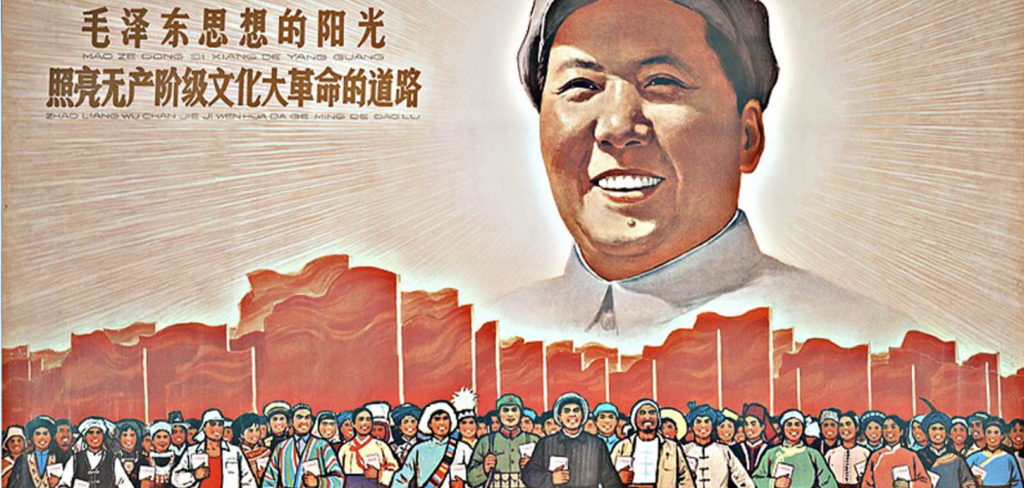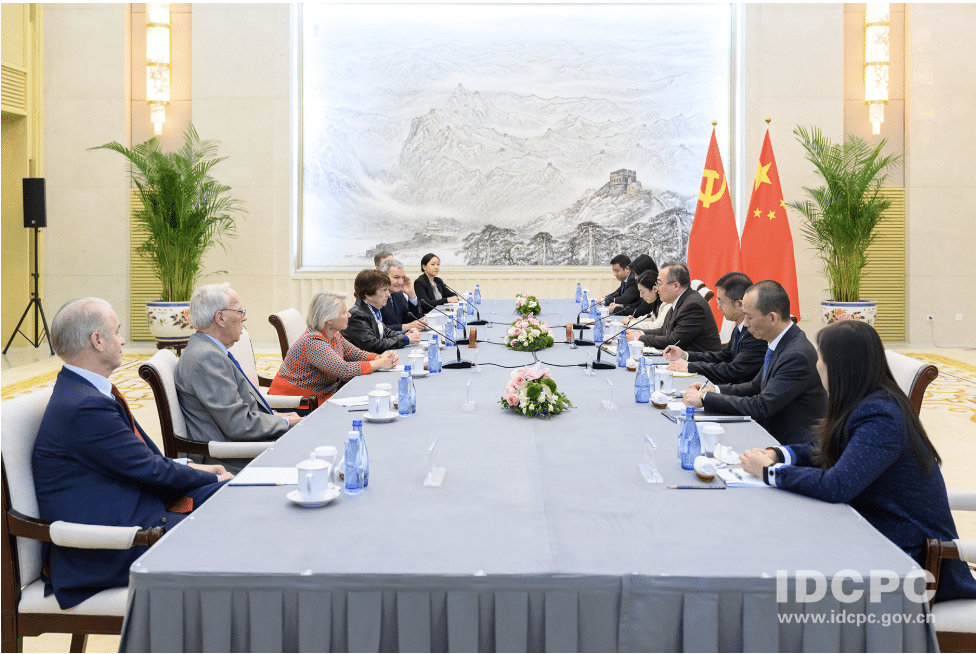China’s Latest Five-Year Plan Could Be Its Last
The outline for China’s 13th five-year plan isn’t exactly summer beach reading: The 65,858-character document, which lays out in broad terms how China’s leaders want the country’s economy to develop between now and 2020, is akin to the Platonic ideal of the consensus policymaking for which Beijing’s mandarins have long been famous.
And as with many a seemingly binding document in China, each five-year plan serves as the opening salvo for the start of the real negotiations. Already lower echelons of government have begun to interpret the latest round of orders from on high to better suit an impossible variety of agendas at every ministry, regulator, region and locality. Soon they, too, will issue plans.
In the years since the party abandoned its old Soviet-style economic planning system for a more adaptive version, the central leadership has managed to broadly bend China’s legion of competing interests toward key developmental targets. But as China’s economy grows more complex and difficult to direct, the feasibility of this generally successful five-year planning system may soon come to an end. How the party handles that change – and the circumstances under which it occurs – could have a substantial impact on its legitimacy.
“What’s at stake here is this idea that a national economy can still be guided by a party center and a strong government in these times of turbulence and of structural transformation,” said Sebastian Heilmann, founding director of the Mercator Institute for China Studies (MERICS) and author of numerous works on China’s political economy.
“This is rather shaky, and I think they will have to learn the hard way that these complex and globally integrated economies, they can’t be guided by a government so easily anymore.”
Soviet stigmas
China’s five-year planning system is often described in Anglophone media as “a Soviet-style holdover of the centrally planned economy.” But it has been roughly two decades since that was the case.
China’s first FYP in the true Soviet sense came shortly after the founding of the PRC, running from 1953-1957. After some initial success in boosting industrial output, Mao Zedong promptly brought ruin down on the country’s populace by pushing through the disastrous follow-up of the Great Leap Forward, starving roughly 36 million people in an attempt to cram decades’ worth of industrialization into half of just one.
Despite its drawbacks, the old planning apparatus continued to direct economic activity even after Mao’s death in 1976, though centralized planning of resource allocation was drastically curtailed starting in the mid-1980s for sectors not considered vital to continued party control.
It wasn’t until after the Soviet Union had collapsed that China’s five-year plans shed their old role: In 1993 the party’s Central Committee ordered officials to “take markets as the foundation,” and by the time the ninth FYP rolled around in 1996, the party-state had begun drastically reconfiguring the purpose and process of planning.
In place of a static blueprint, FYPs were recast as an adaptive, continuous cycle of policy coordination, implementation, evaluation, and later, adjustment. The new planning system helped preserve the central leadership’s influence over China’s economy and the party’s political dominance while also decentralizing decision-making and providing room for market forces to grow.
Plan as process
Preparation for each FYP can begin as early as two years before publication, according to anin-depth analysis of the planning system co-authored by Heilmann and Oliver Melton, of the US Department of State.
The party’s Central Committee typically approves a plan proposal in the fall of year before a given plan’s five-year span begins, outlining its content in broad terms. The National Development and Reform Commission under the State Council then hammers out the details before China’s legislators rubber-stamp a broad, finalized outline in March, during the annual session of the National People’s Congress (NPC).
From there – and as described by a psychedelic music video published by the state-run Xinhua News Service – thousands of sub-plans begin issuing from lower levels of government, working out the concrete details of how to actually implement the outlined policies.
More recent plans have further consolidated the changes of the 1990s: The 11th FYP actually changed its title from “imperative plan” (jihua 计划) to “coordinative plan” (guihua 规划), and divided top economic targets into two categories: “indicative” and “binding”. The latter are viewed as government promises and used to measure cadres’ performance in annual evaluations to encourage implementation.
The 12th FYP was first to fully employ the new target framework, and further institutionalized the planning process under the NDRC’s direction, and included a phase of reevaluation and policy adjustment at the halfway point that continued even as work began on its successor.
With so much advance notice and a preview of its essential contents made available months ahead of time, few were surprised by the 13th FYP when its full (Chinese-language) text was published on March 17. But that doesn’t mean the plan wasn’t important – or even surprising – in its own right.
Still in a bind
Analysts and economists from a variety of consultancies and brokerages issued a raft of notes during the NPC in March, generally expressing a lack of surprise at the targets announced for the new FYP; discounting the possibility of an immediate hard landing; and voicing uneaseover the retention of a growth goal for headline GDP.
Concern was particularly keen among those whose estimates already peg China’s growth below 6.5%, the average annual rate of expansion the plan calls on the country to maintain for the next five years.
“It’s a tough one,” said Julian Evans-Pritchard, China economist with Capital Economics. “At least on our measure the economy is already growing below that level, so there’s a question of what are they going to do over the next five years.”
Pritchard-Evans said he expected authorities would more likely fudge the numbers than deploy another massive stimulus like that seen in 2009, which has proven harmful to the economy in the long run by driving up overcapacity and wasteful spending.
But he continued, “you do wonder why they still see the need to stand by this target. Obviously the target was set by the previous administration, but dropping it would’ve been the right thing to do.”
The 6.5% growth goal is not technically even a binding target. It is, however, based on a straightforward calculation of how much growth is necessary to meet the party’s high-profile centenary goals, which call for doubling China’s average of disposable income from its 2010 level, as well as ending absolute poverty, by 2020.
Heilmann said that while top officials at the NDRC had expressed concerns to him about the feasibility and high cost of the poverty alleviation goal in particular, Xi’s repeated and public emphasis of the goal as a top-level target meant the government was likely to spend heavily on it anyways.
But the centenary goals aren’t the only policy targets whose success depends on hitting that high-level headline growth rate.
“It’s actually the baseline, so this must be achieved, otherwise most of the other goals will not be achievable,” Heilmann said. “The signal is made clear in this plan, again, that even though 6.5% was not announced as a ‘binding’ target, it is actually the foundation for most of the other efforts.”
Disruptive developments
Those efforts are legion, but perhaps no theme takes up as many column inches of the 13th FYP as the importance of innovation for China’s economy. That focus has been visible since the Central Committee released its guidelines last year.
Scott Kennedy, director of the Project on Chinese Business and Political Economy at the Center for Strategic and International Studies, wrote of the party leadership’s latest guidelines: “At its heart this plan is about innovation first and foremost,” with a focus on addressing legal, financial and institutional obstacles to innovation.
Kennedy noted that the question of how exactly to measure China’s progress toward becoming a more innovative society remained unanswered ahead of the outline’s publication in March.
The final text does place tremendous emphasis on innovation, particularly the role of entrepreneurs and individual researchers, calling for their role in contributing to national innovation to be strengthened, the benefits they receive from their work to be greater, and their involvement in government policymaking expanded.
Heilmann noted that the outline even grants entrepreneurs a “right to speak up” (Section 8.1) on government decisions in the field of innovation, though he was skeptical a top-down policy, likely driven by more state-backed investment programs, would do much to spur more bottom-up innovation and entrepreneurial drive.
For those workers losing their jobs from cuts to overcapacity sectors, the plan also calls for the better provision of vocational education, which will gradually be made available free of charge (Section 59.2). That tracks with the broader policy objective of restructuring China’s economy away from heavy industry and toward higher-value manufacturing and services.
Much like the recent announcement of a relatively small RMB100 billion buffer fund for those let go due to overcapacity cuts, it may also reflect policymakers’ optimism about the likely levels of unemployment resulting from economic transition.
Damien Ma, a fellow at the Paulson Institute, said that among top policymakers, there was “a sincere sense that they do believe the services sector will be the savior in absorbing unemployment.”
Ma said that while some had called for a greater fiscal deficit to help cushion the blow of shutting down overcapacity sectors, belief in the sustainability of services sector growth had likely convinced the center it didn’t need to dole out large sums of money for layoffs that were ultimately far smaller than those made in the late 90’s under then-premier Zhu Rongji.
Modesty: The best policy?
Yet if services are to provide salvation from rising unemployment, the party is not anxious to divulge exactly how: In stark contrast to the emphasis of the previous plan, the 13th FYP doesn’t even include a section on the role of services in the economy.
“I think this is kind of a systematic blind spot in the plan, I must really say—it surprises me,” Heilmann said. He added that based on the lack of detail and a relatively unambitious target of 56% for services’ contribution to GDP by 2020, up just 5.5% from 2015, “the services sector is underpowered in this plan. No doubt.”
The plan’s latest targets for lowering emissions and pollution relative to energy consumption are likewise relatively modest, which Ma noted was par for the course thanks to previous plans’ reduction targets having already snapped up most of the low-hanging fruit.
“If you’ve been tracking this for the last few years, this should not have been a surprise,” he said, pointing instead to more ambitious goals for development of green finance and green technology, in addition to more integrated planning on economic growth and the environment.
“I think that there’s less emphasis on growth targets and more emphasis on development in a more holistic sense, which I find somewhat encouraging compared to the previous plans,” Ma said.
The new plan also makes no mention of plans for a Strategic Emerging Industries Board on the Shanghai Stock Exchange meant to provide a new venue through which smaller, innovative firms could raise capital. Instead, more attention is given to the Made in China 2025initiative to upgrade the manufacturing sector to handle high-value, high-tech production in ten key industries.
But for those, green tech development, the One Belt One Road infrastructure plan and the myriad potential sectors covered by “innovation,” the risk of spurring overcapacity (like that which ultimately undid China’s booming solar panel sector) looms large. In February Fan Gang, a pro-reform professor of economics at Peking University, stressed in comments to Sina Finance that the selection of specific industries for government support in the 12th FYP had failed to pan out, “especially those emerging strategic industries.”
“There’s a problem with the mechanism here: No sooner do we add [sectors] to a list of strategic industries than does every level of government start funding them, people in the market get bamboozled, and in a flash they become overcapacity sectors as well,” Fan said.
Danger in caution
The 13th FYP also includes calls for substantial improvements to social security access and China’s tax system, but when it comes to the most urgently needed economic reforms, the plan appears far less ambitious.
The same relatively smaller cuts to heavy industry’s workforce that aim to keep unemployment down keep expenses at the (often state-owned) firms employing them up. State-owned firms also look likely to continue receiving state support even if unprofitable, with policymakers encouraging mergers instead of allowing dysfunctional firms to go out of business.
“From the language of the NPC and FYP, it seems their policy is to avoid layoffs and bankruptcies at all costs,” said Evans-Pritchard. “The problem with that is it’s sending a message that they’re not really willing to accept there’s a certain amount of pain that comes with this restructuring.”
While he said Capital Economics didn’t expect policymakers to run out of ammo for shore up the economy in the short run, the firm was far less optimistic about China’s prospects beyond the end of 2016.
“I think the trouble is the economy still remains on a downward trajectory,” he said. “Partly it’s structure, but there is still I think the potential for China to be growing faster than it is at the moment if they remove some of these structural barriers.”
While unprofitable state firms could be kept alive by rolling over loans or other similar measures, locking up resources just to keep them from collapsing would be a serious drag on China’s long-run potential growth.
Marie Diron, senior vice-president for sovereign ratings at Moody’s, said the firm was paying close attention to how China planned to balance the three key objectives of supporting growth, pushing forward with reform, and maintaining economic, financial and social stability—and whether it could.
“In the plan, if we can summarize it very succinctly, the emphasis is very much on growth and stability, possibly at the expense of reforms, or at least the reforms that could jeopardize its growth and stability objectives,” Diron said.
From a sovereign risk perspective that suggested supportive growth policy in the years ahead, she said, leading to a further increase in leverage, one of the key drivers of risk that had led to Moody’s to recently downgrade China’s government bond rating from stable to negative.
With great power…
Perhaps the most surprising change from the previous plan comes in the 13th FYP’s final chapter on planning and implementation, where the central leadership role of the party in carrying out the plan is explicitly and repeatedly emphasized. That may indicate the balance of power within the party-state is tipping further in the direction of its former half.
For the previous two plans, the party set basic goals with the publication of guidelines in the fall, after which the state technically took over: The State Council’s NDRC and the NPC would draft and publish the full plan outline in March, then the NDRC would begin delegating responsibility for implementation to other state organs.
But the latest plan outline, ostensibly a state document, appears to shift ultimate responsibility for overseeing and ensuring implementation of development policy to the party. That further centralizes power in the hand of Xi, whose fingerprints are visible elsewhere in the plan—and who had previously broken protocol in November when he unveiled the plan’s guidelines himself instead of China’s premier, Li Keqiang, as has always been done.
“The party center is in the business again here, and it is implicit in this that the State Council is not the ultimate organ that is in charge here,” Heilmann said. But he also warned that China’s economy was growing so complex and globally integrated that the 13th FYP might be the last, should target figures’ trajectories begin falling wide enough of their marks.
Even then the optics of such a breakdown could be spun into an economic triumph if party propagandists prove deft enough. “The trick that they could still pull is to say they [have been] successful in realizing the decisive role of markets and competition. Then the five-year plans are not necessary anymore,” Heilmann said.
For now, at least, the planning system is quite intact, and gearing up for the issuance of more detailed implementation plans from countless party-state organs; the contradictions at the heart of many policy goals remain serious, and with so much power now gathered in his hands, Xi is under pressure to deliver on his policy promises as well as those of his predecessors.
Whether his administration can deliver 6.5% GDP growth is far from certain, and whether he could own up to falling short of that goal even less so. As his diminished counterpart Li carefully explained to a Xinhua reporter at the close of the NPC: “If you’re asking me to agree to say China’s economy won’t meet the main economic [growth] target that has already been established, that’s not possible.”
Truer words have rarely been spoken.
By HUDSON LOCKETT Mar. 24, 2016 on China Economic Review
Read more here








